Quick and Dirty Light Box
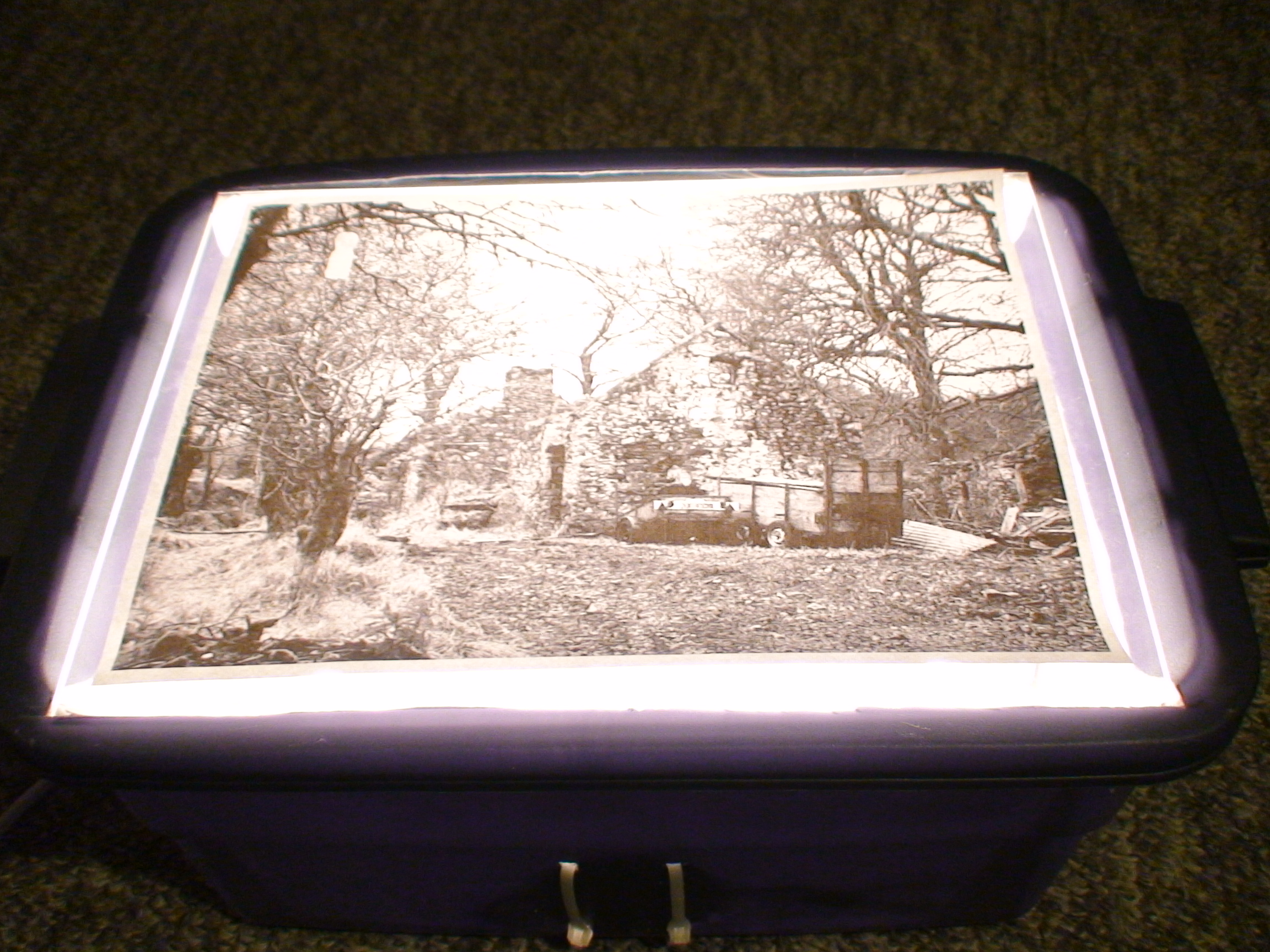
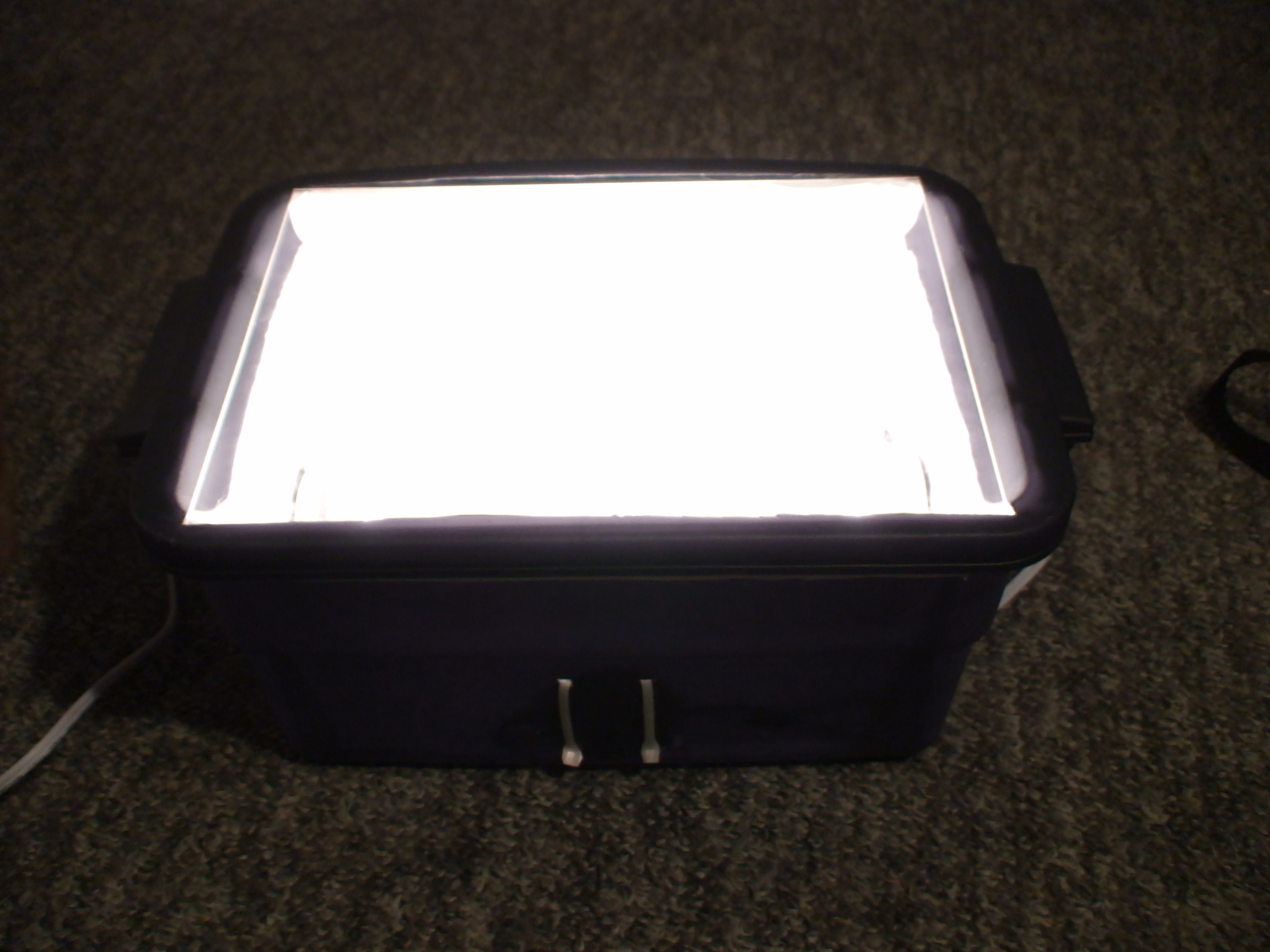

A light box (I have heard it also called a shadow box) is an extremely handy tool for artists anywhere. It can be used like a Camera Obscura or Camera Lucida, which have been used as artistic aids for a very long time.
The principle is that you put an existing image, such as a photograph, newspaper clipping, other sketch, someone else's mail, etc. and lay it on the shadow box under a sheet of paper. The strong backlighting lets you see the image. You can trace the image onto the other paper.
You might say that's cheating, but I say you should stay out of my business. There are indications that many master artists used similar techniques in creating their art. It is also useful for beginning artists to trace out pictures to help practice drawing new shapes. I used this for my Christmas Card from 2012.
Now, I’ve seen shadow boxes on sale for $20 now, but my frugal nature will not allow me to part with that money as long as I have spare parts left in my storage closet!
Materials:
The principle is that you put an existing image, such as a photograph, newspaper clipping, other sketch, someone else's mail, etc. and lay it on the shadow box under a sheet of paper. The strong backlighting lets you see the image. You can trace the image onto the other paper.
You might say that's cheating, but I say you should stay out of my business. There are indications that many master artists used similar techniques in creating their art. It is also useful for beginning artists to trace out pictures to help practice drawing new shapes. I used this for my Christmas Card from 2012.
Now, I’ve seen shadow boxes on sale for $20 now, but my frugal nature will not allow me to part with that money as long as I have spare parts left in my storage closet!
Materials:
- Cabinet Light Set
- Plastic Storage Tote
- Acrylic Sheet
- Zip Ties
- Paper
- Paper Glue
- Several Pieces of Plain Paper, Size is Optional
- Drills and/or Utility Knives
- A Sense of Adventure
Carving the Box
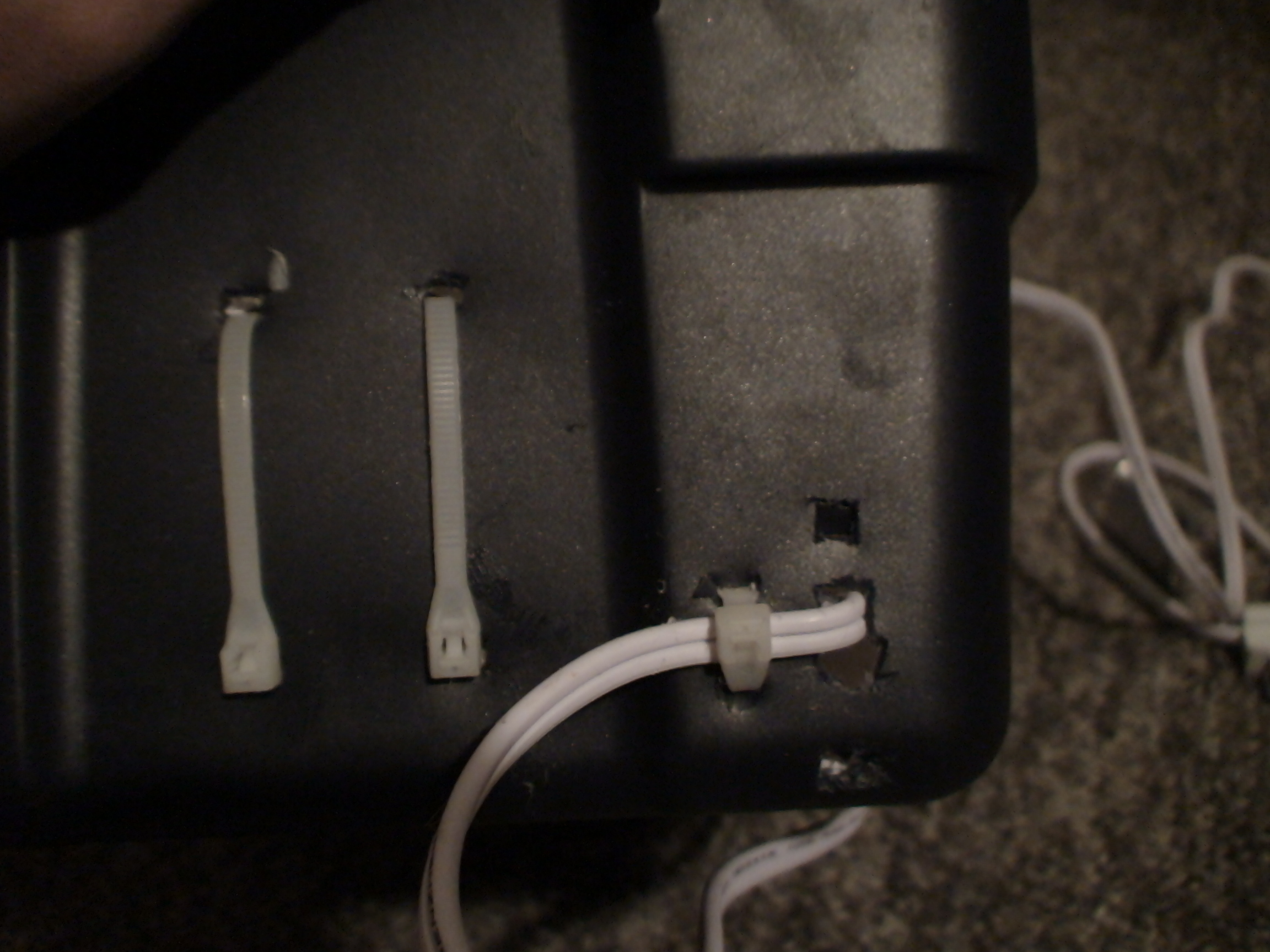
The lights I had have handy spots for securing them with wire ties, so for each light position I put in four rectangular holes near the mounting holes. In the corner I also put two holes for the cord.
Pay no attention to the extra holes. Let's just say that I didn't have an Instructable when I made this.
Pay no attention to the extra holes. Let's just say that I didn't have an Instructable when I made this.
Carving the Lid
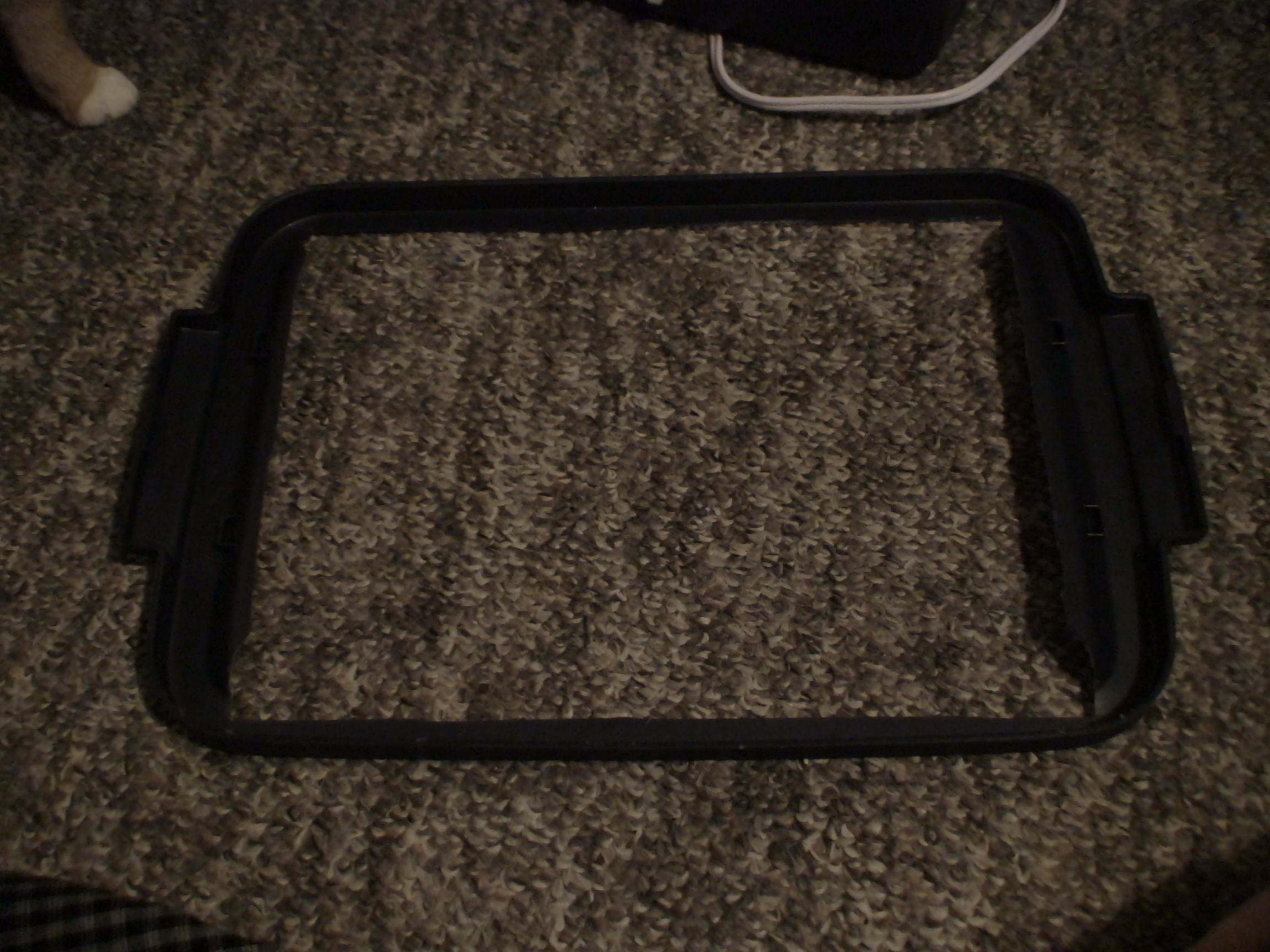
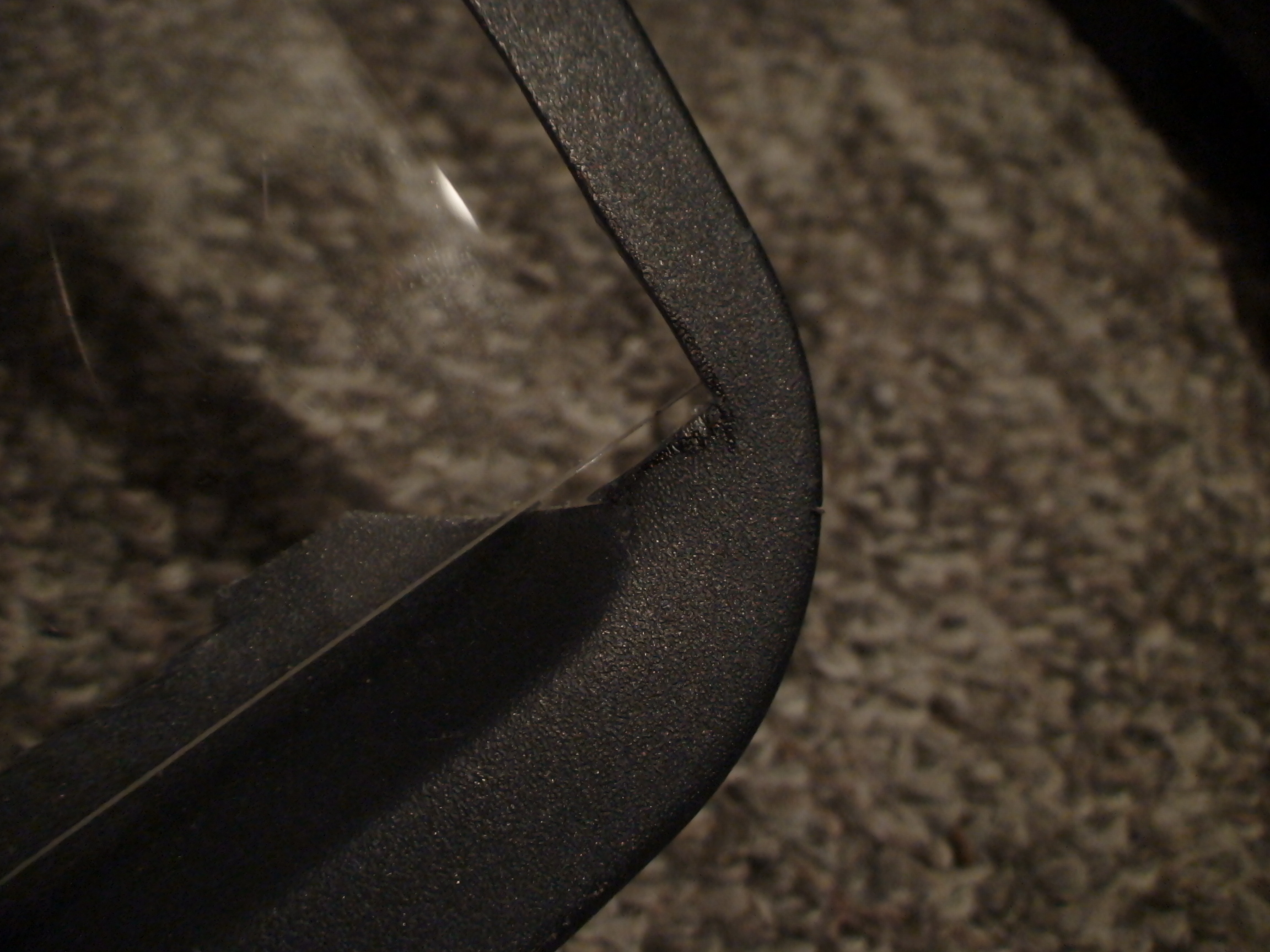
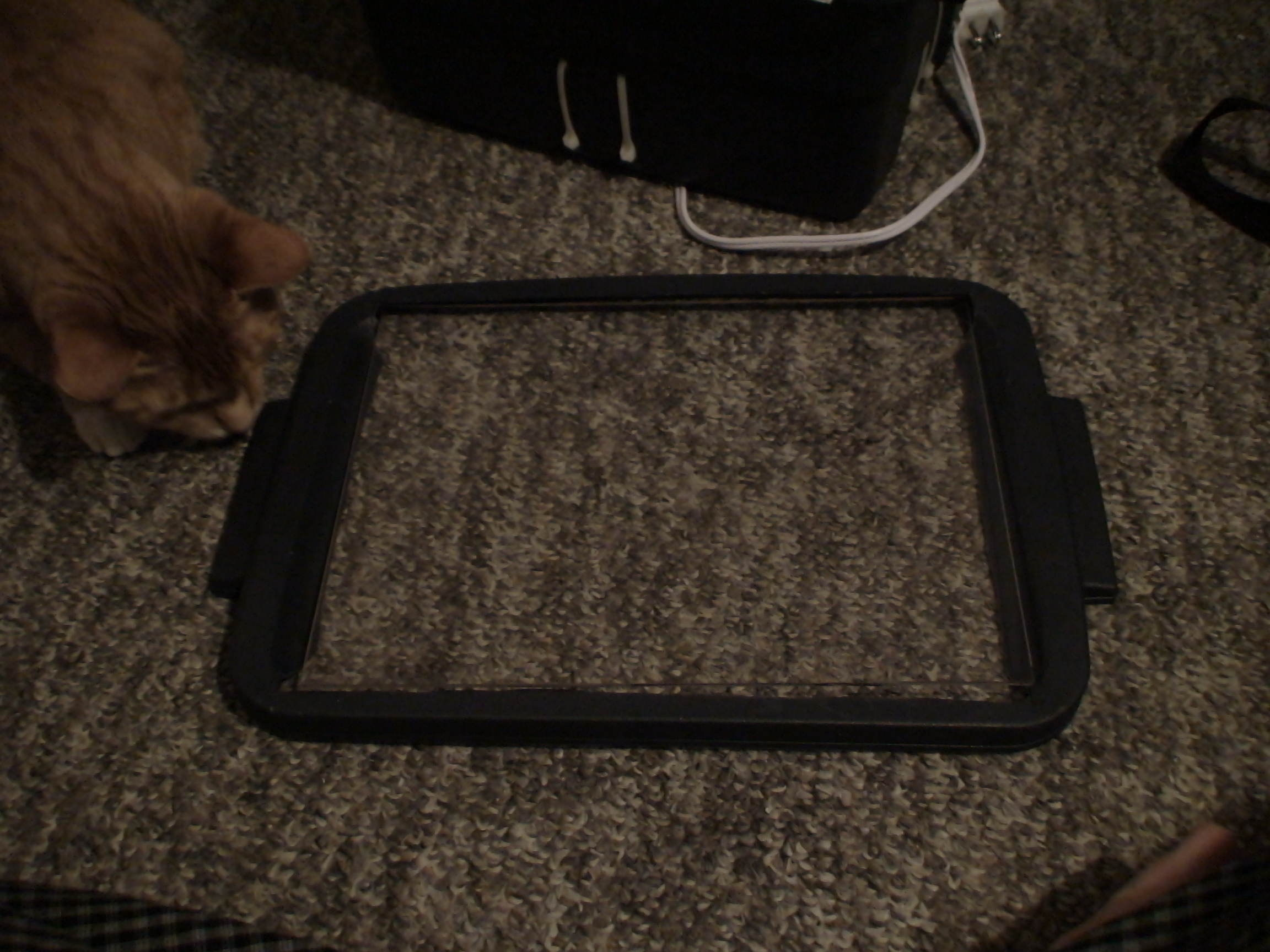
I tried to take advantage of the indentation in the lid here. At the narrow ends I cut in a tab to hold the acrylic on the bottom. On the long side I just cut away the cover as the acrylic slides under the lid.
Paper the Box
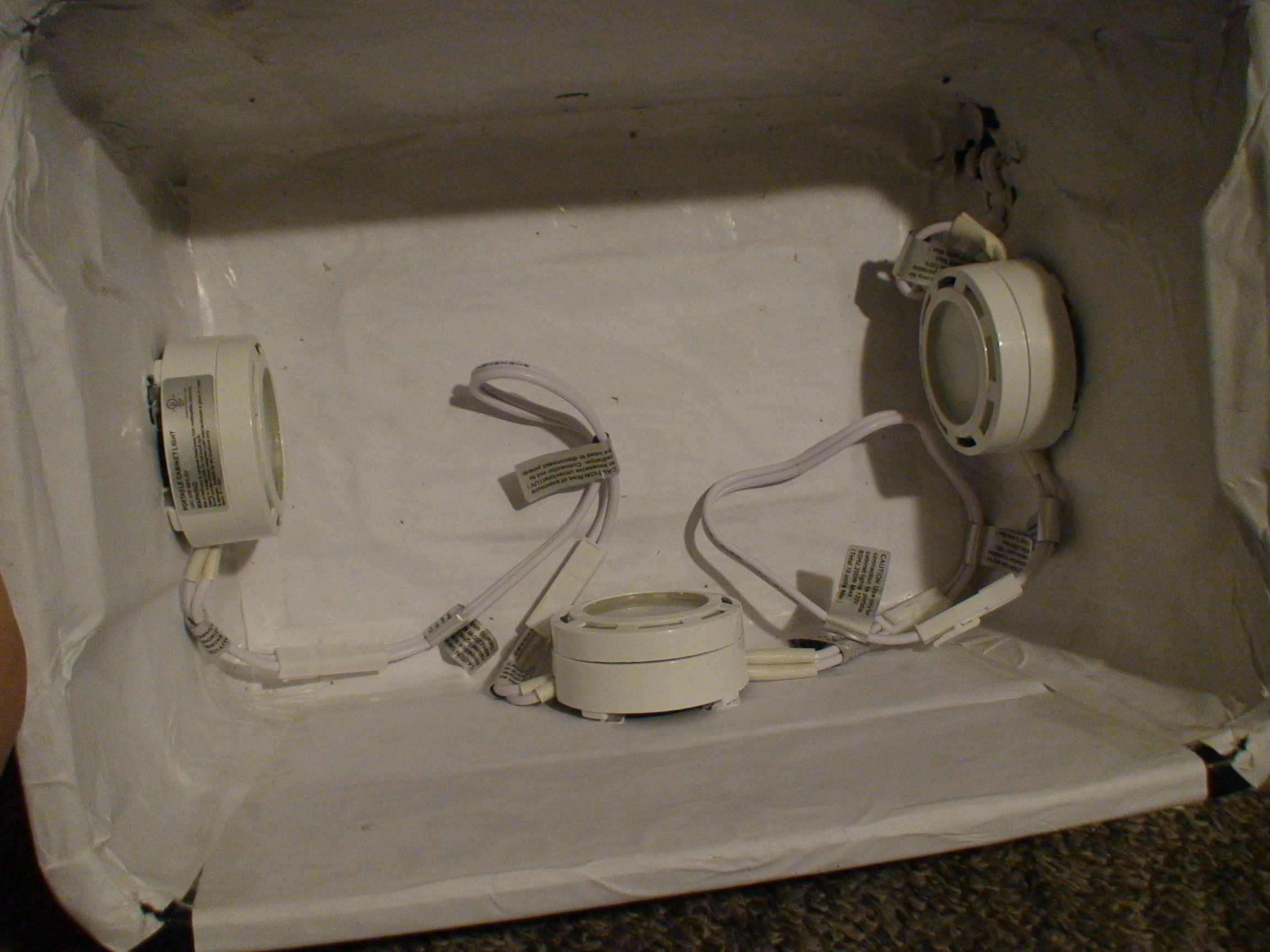
The important step here is to get decent coverage. The paper reflects the light around in the box and diffuses it. Overlap is perfectly fine. Remember, your art is what is important, this is just your personal sense of craftsmanship.
Mounting the Lights and Power
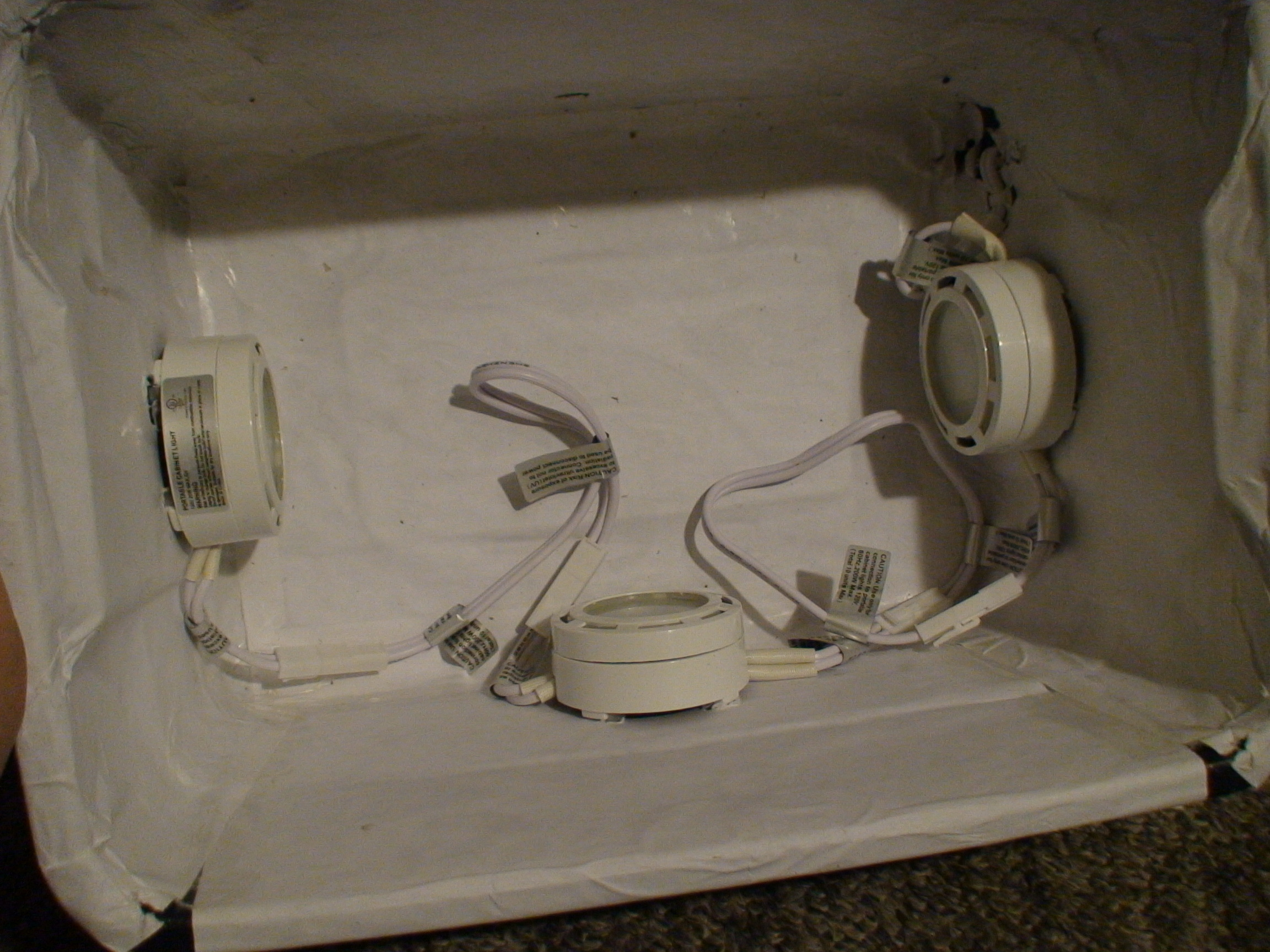

The lights I had conveniently were able to be mounted with cable ties as you can see. This is going to be where you will have to take some initiative based on your lights. Instructables cannot help you...with this...maybe...just mount the lights.
Assembly
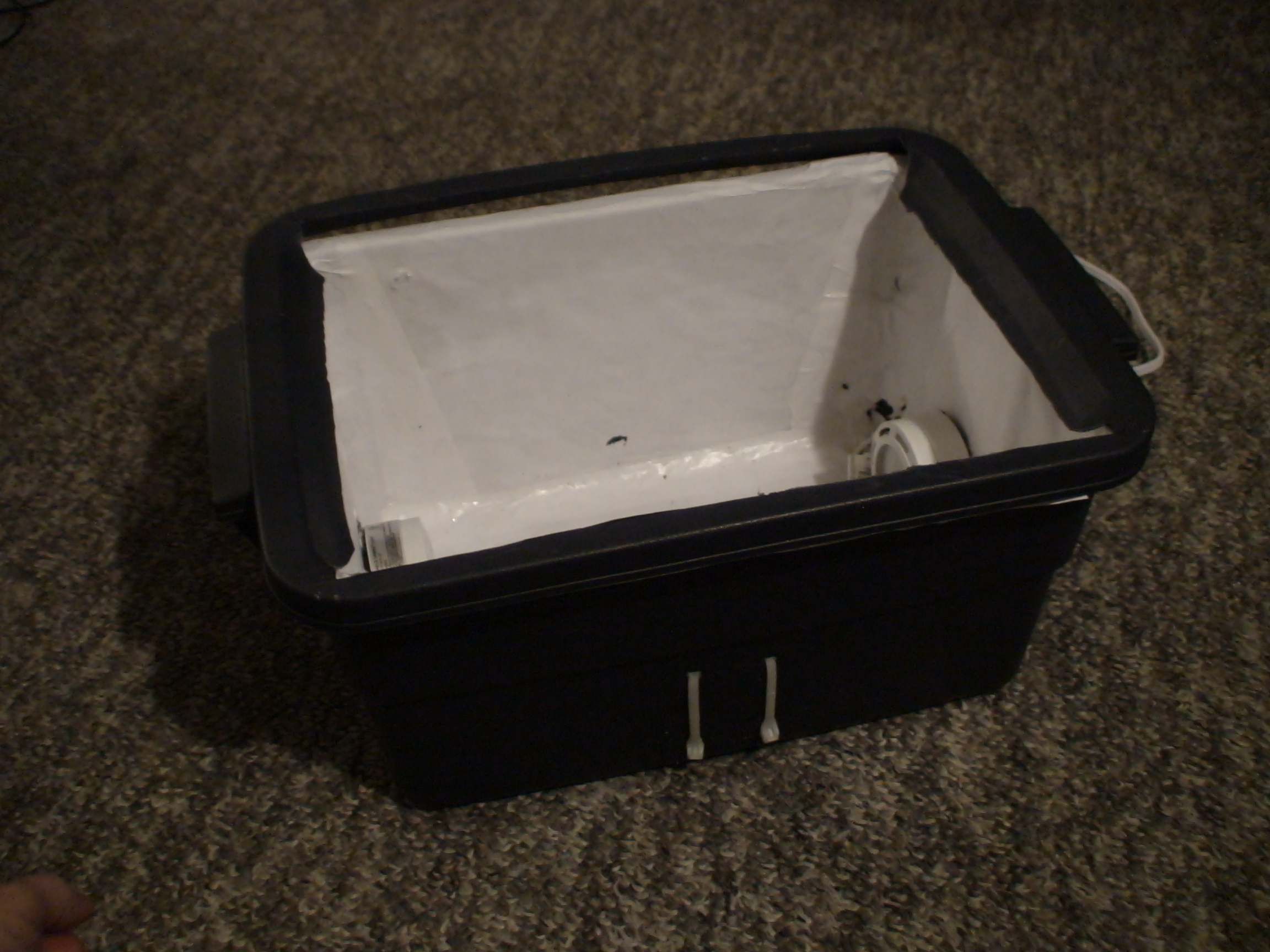
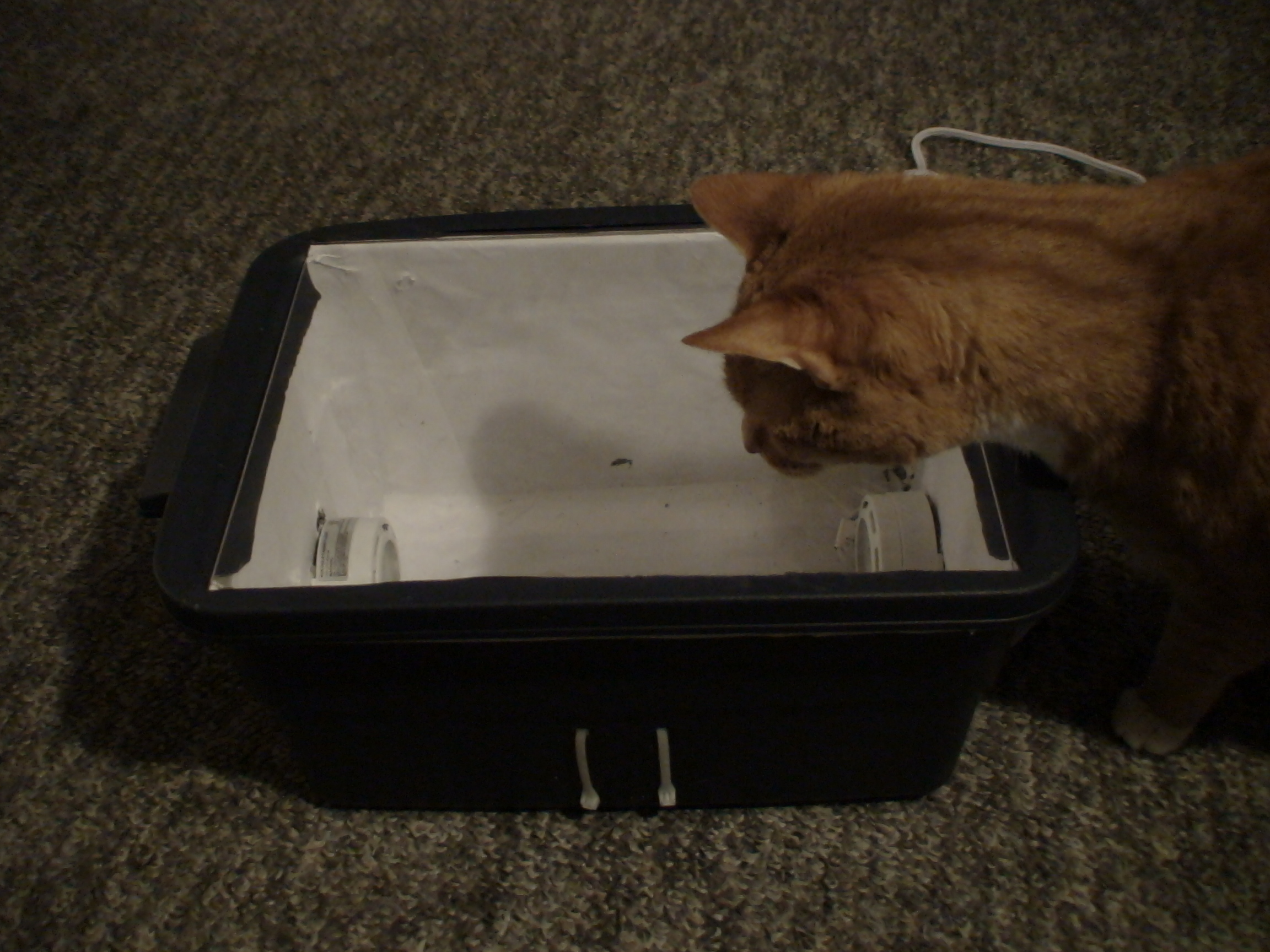
At this stage I expect that you have already jumped ahead and are making the next artistic revolution, but for the sake of completeness, here is Step 5. I would wait until all of the glue is dried before putting on the lid. I just don’t like leaving glue to dry in an enclosed space. It encourages unhealthy spirits to inhabit your box, which is a good way to spoil your artwork. At the same time, try to avoid working over an active haunting site or old graveyard.
Fire It Up and Prepare to Art!
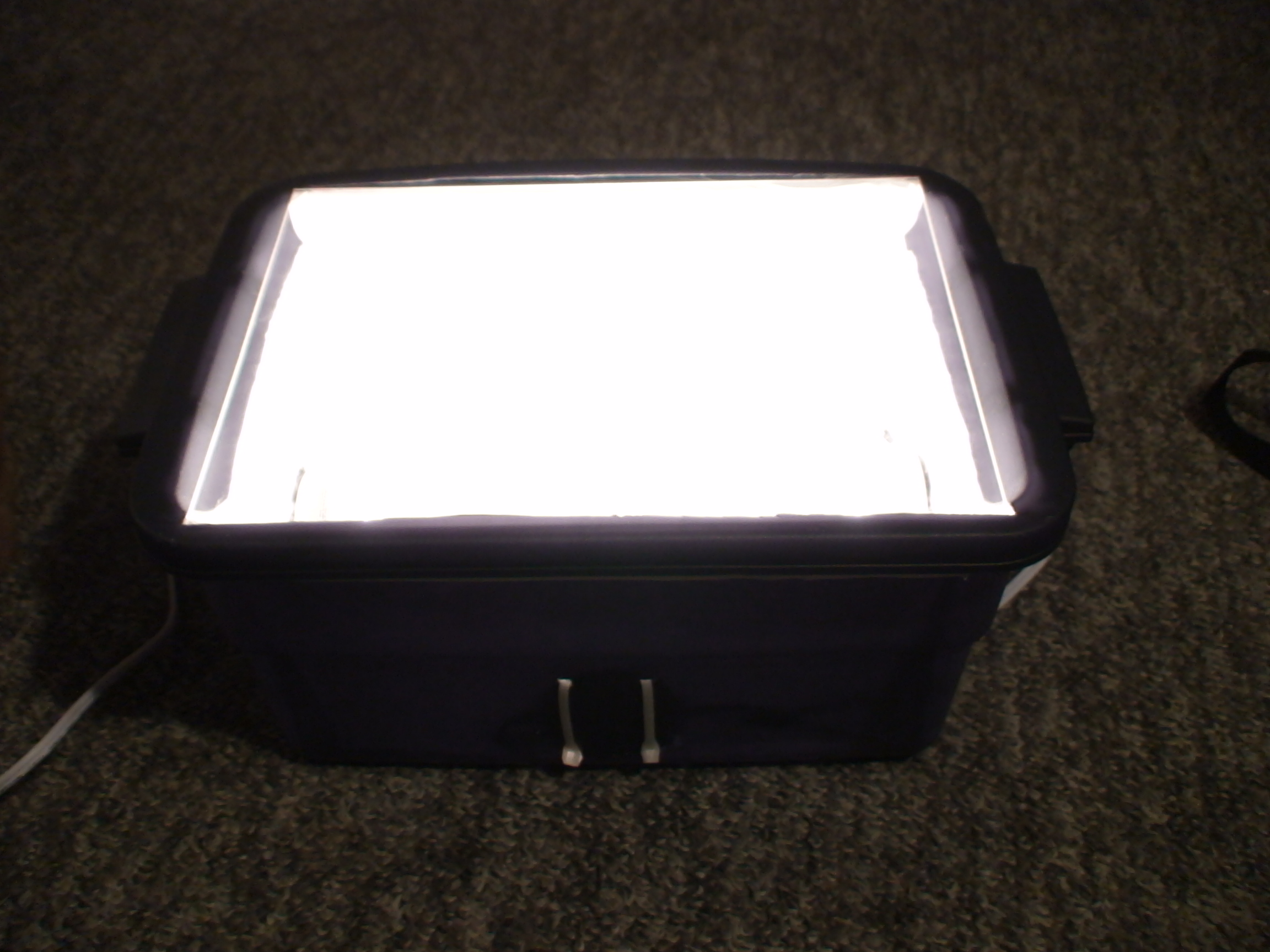
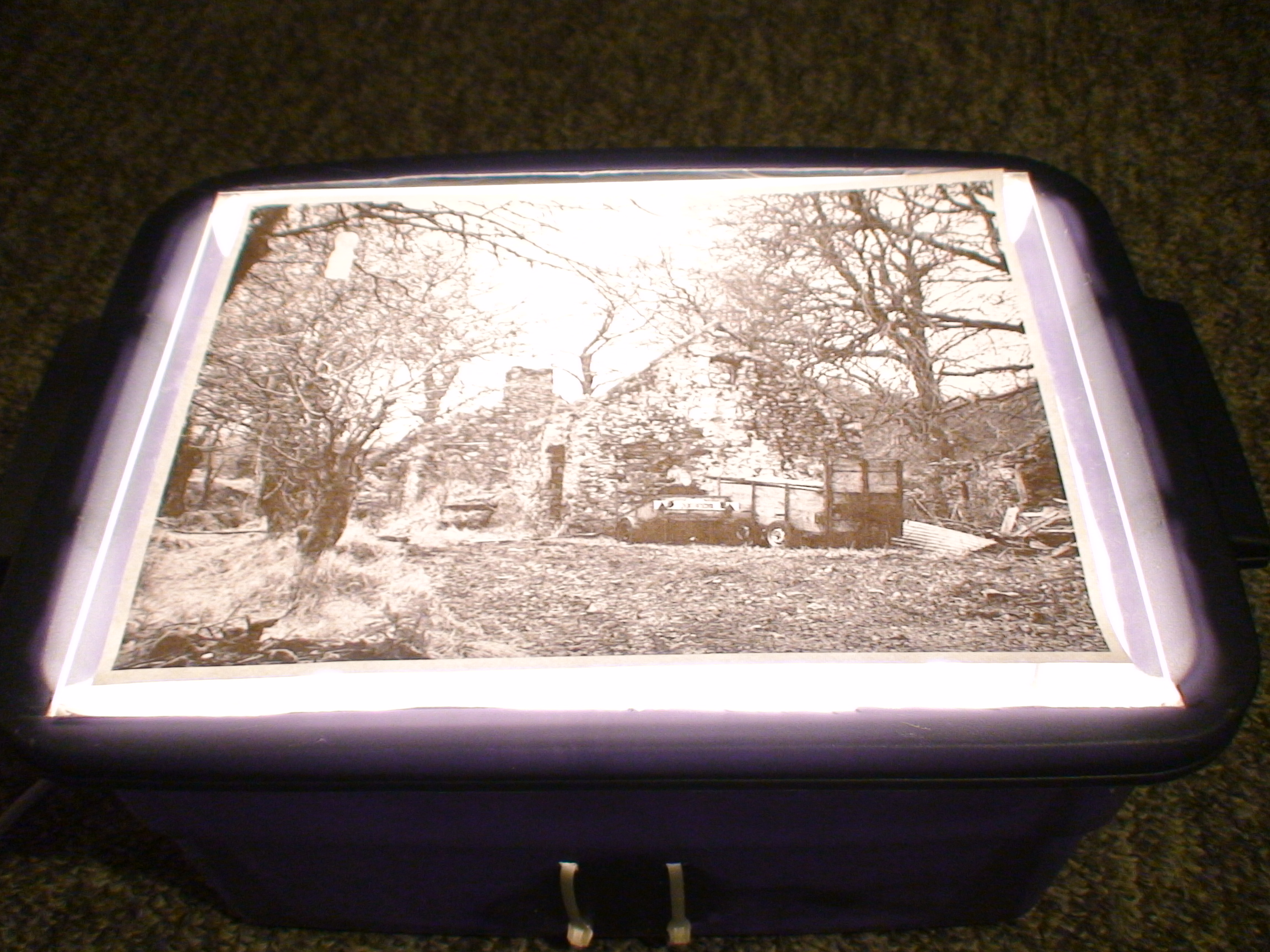
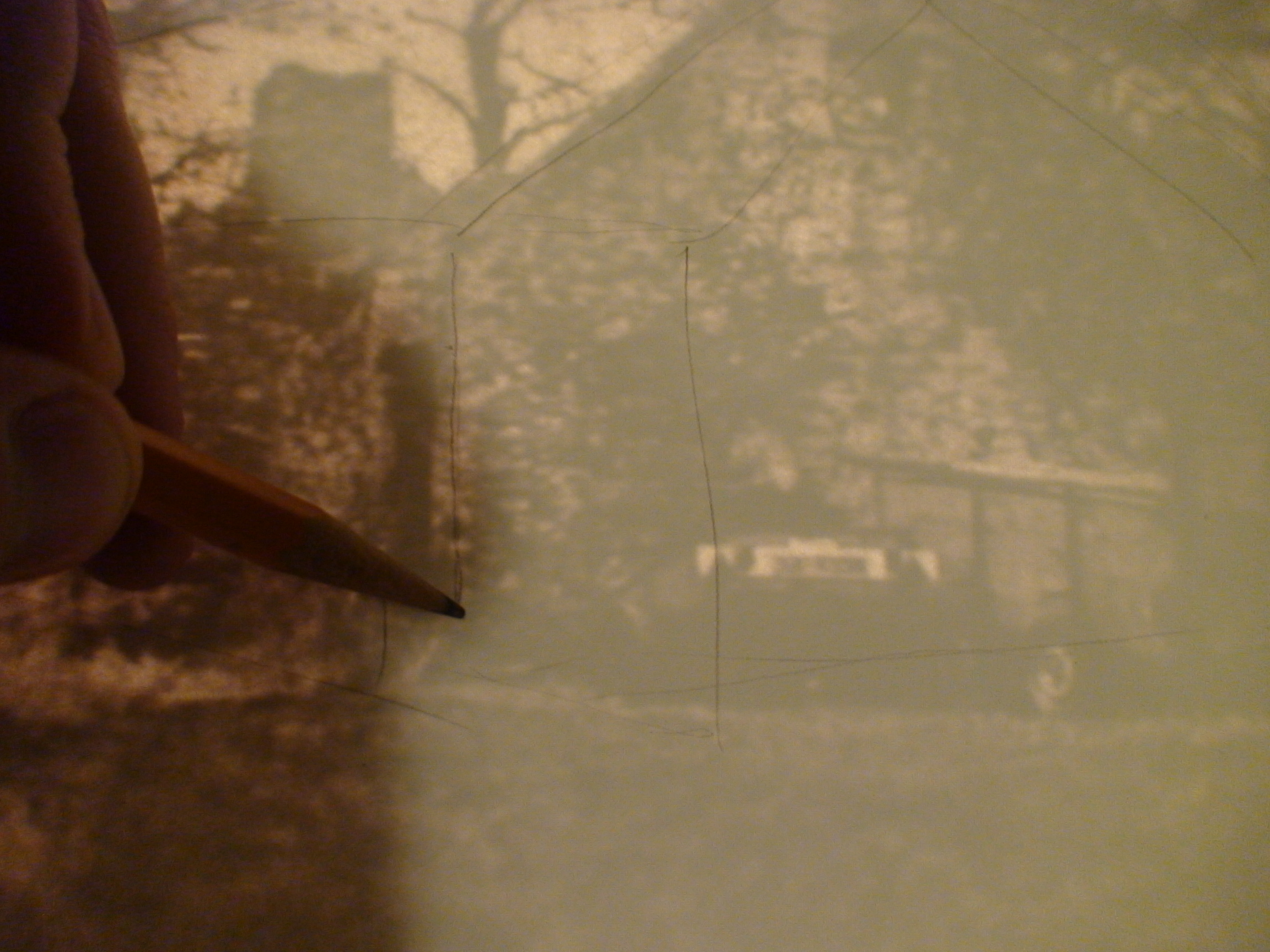
Now it is time to see if you have wired everything correctly. Prepare the fire extinguisher and turn on the switch. If you don’t have a melted and/or burning pile of plastic after 5 minutes, you have done well!
One of the most common uses I have for it is when I am including a building or other fixed structure in my drawings. I like to use it to get the proportions and layout down as well as to catch some of the details of the building that I might otherwise have missed.
The digital era has made this a lot easier.
The basic method is to:
One of the most common uses I have for it is when I am including a building or other fixed structure in my drawings. I like to use it to get the proportions and layout down as well as to catch some of the details of the building that I might otherwise have missed.
The digital era has made this a lot easier.
The basic method is to:
- Take a digital picture of your subject
- Change it to grayscale.
- Increase the contract until it is close to black and white. Play with the brightness and other parameters to get a clear image.
- Scale your image and/or make a composite image from multiple shots.
- Print on basic printer paper, which is thin enough to be easy to shine through.
- Pieces of masking tape or drafter’s dots help to secure your copy.